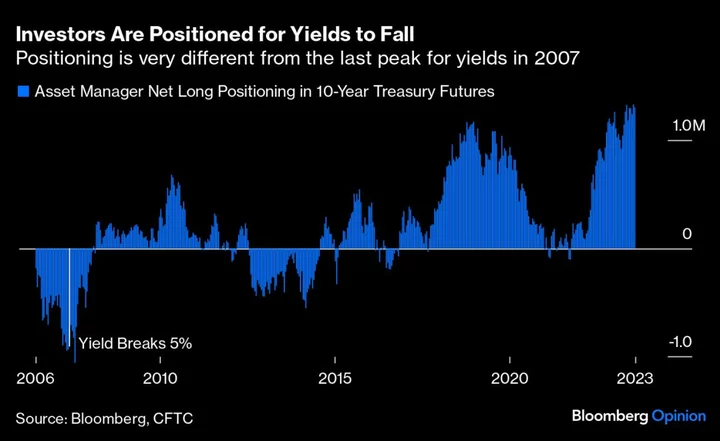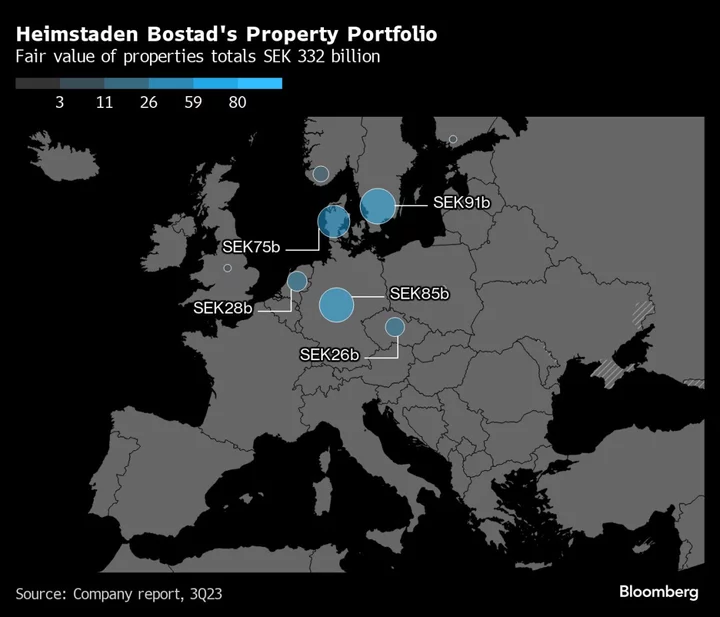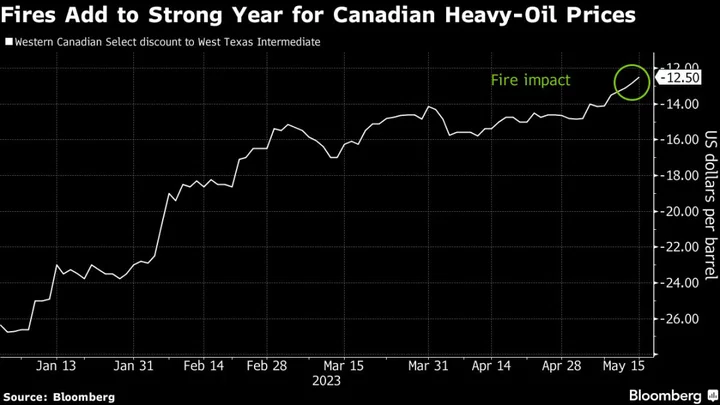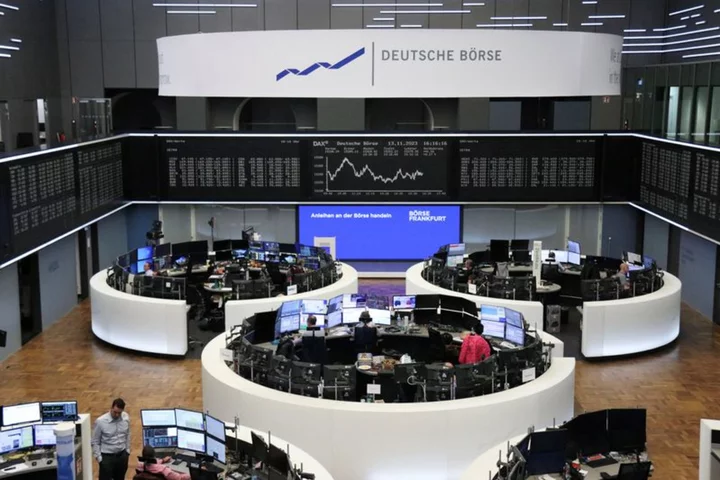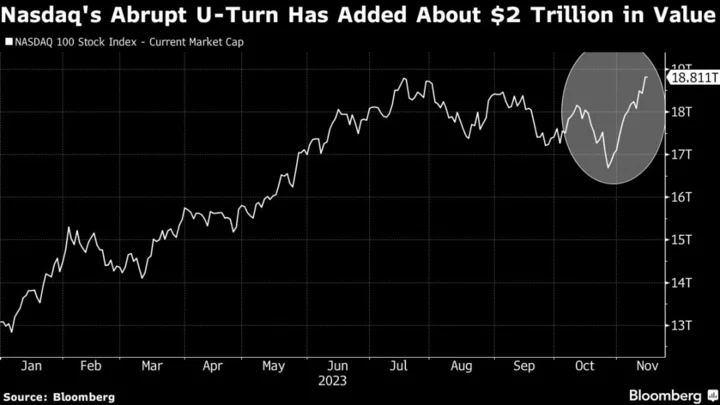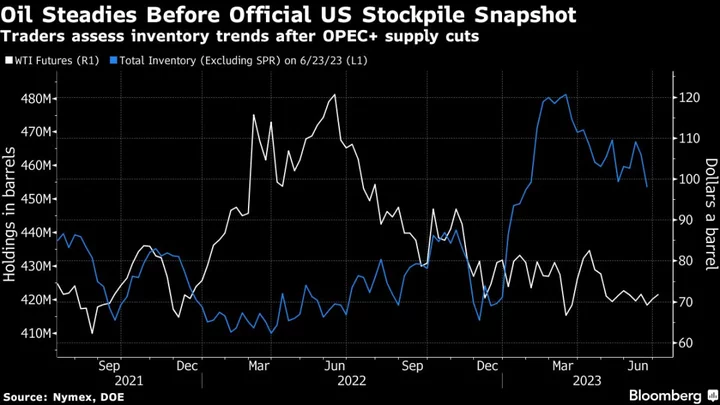Convinced a recession in the US was near, some of the world’s most prominent money managers loaded up on government bonds this year in a bold bet that would atone for the punishing losses suffered in 2022.
That strategy is now misfiring once again, saddling them with subpar returns and testing their resolve as the selloff deepens week after week.
This past week was especially painful. The annual return on US government bonds fell into the red as Treasury yields flirt with a 15-year high, reflecting the view that interest rates may be elevated for years to come — and the economy will be able to sustain it.
Bob Michele, one of the most outspoken bond bulls, is undeterred. The CIO for fixed income at J.P. Morgan Asset Management, who correctly predicted the slide to Treasury yields “all the way down to zero” from 2% in 2019, says now his strategy is to buy every dip in bond prices.
The firm’s flagship Global Bond Opportunities Fund is down 1.5% over the past month and beating just 35% of peers so far this year, compared with 83% over the past five, according to data compiled by Bloomberg.
Others in the same camp — among them Allianz Global Investors, Abrdn Investments, Columbia Threadneedle Investments and DoubleLine Capital — believe the economy is only just starting to absorb the impact of five percentage points of Federal Reserve rate hikes. A deeply inverted yield curve, an unfailing harbinger of recession, supports this view.
“We don’t think this time it’s different,” said Michele. “But from that first rate hike until recession could take a while. We continue to see a growing list of indicators which are only at these levels if the US economy is already in recession or about to enter recession.”
Yet the US economy continues to defy recession die-hards. Growth is accelerating and new jobs are being created. Consumers are resilient. Even staff at the US central bank are no longer forecasting a recession. Bank of America’s latest global survey found investors increasingly expect no recession at all within the next 18 months.
As they keep their recession watch, bond bulls are underperforming, and searching for ways to cushion losses.
For those who manage a pure bond fund, there are various levers to bet on or against economic growth. An anti-growth bet would be to increase duration, a measure of sensitivity to interest rates, and allocate away from riskier assets like high-yield credit likely to face losses from corporate defaults in a recession.
They can also hedge by making temporary adjustments to duration, even if it goes against their long-term views.
Despite being a bond bull, Columbia Threadneedle’s Gene Tannuzzo has pared duration since July as the yield curve became more deeply inverted, shifting to shorter-dated Treasuries. The Strategic Income Fund he helps manage is up 2.8% this year, beating 82% of competitors, according to data compiled by Bloomberg.
“The best days in bonds are ahead of us” as the Fed approaches the end of its rate-hiking campaign, Tannuzzo said.
By contrast fund managers at Abrdn and Allianz have overweight positions on duration. DoubleLine has also boosted allocations long-dated bonds recently, but offset it with short-dated corporate debt.
“We don’t think we’re going to be wrong,” said Mike Riddell, a portfolio manager at Allianz who’s been long duration since mid-2022. “We’ve remained long duration. We do not believe all the monetary tightening will not have any impact on growth.”
Historical patterns suggest rate hikes lead to slumping economies more often than not. Former Fed Vice Chair Alan Blinder studied 11 monetary policy tightenings from 1965 to 2022 and found that four ended in a soft landing with stable or lower inflation, and the rest in hard landings.
But whether yields will follow economies down, this time, is another question. A key shift in the borrowing needs of the US and other wealthy economies means they’re prepared to let deficits balloons to fund ageing populations, defense spending and making good on promises to cut carbon emissions.
Faced with a flood of debt issuance, investors will demand higher yields.
Even so, riding a short-Treasury positions into 2023 wasn’t always a ticket to easy gains.
The Virtus AlphaSimplex public mutual fund (ticker ASFYX) is down about 6% this year. While its short bond, long stock call looked well-positioned to benefit from the current environment, a big chunk of the drawdowns happened during the banking crisis in the first quarter, according to Kathryn Kaminski, AlphaSimplex Group’s chief research strategist and portfolio manager. Her view is that rates will remain elevated, warranting the short position.
AlphaSimplex Quant Sees Scope for US 10-Year Yields to Reach 6%
“If inflation stays at about where we are now and rates are where we are then there’s no way that long-term cash flow – with no risk premium – can stay there,” said Kaminski. “If rates don’t go down fast enough, long term fixed income have to go down in value. That’s what the market is underestimating.”
For his part, JPMorgan’s Michele is confident bond yields will fall once the Fed winds down its tightening cycle, long before the first rate cut.
“Whether the US economy enters recession or a soft landing, the bond market rallies after the last rate hike,” he said. “The Fed may keep rates at these levels for quite some time, but growth and inflationary pressure continue to slow.”
--With assistance from Greg Ritchie and Isabelle Lee.

